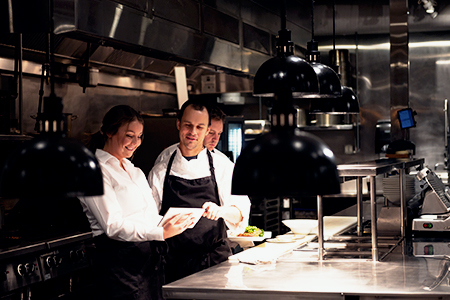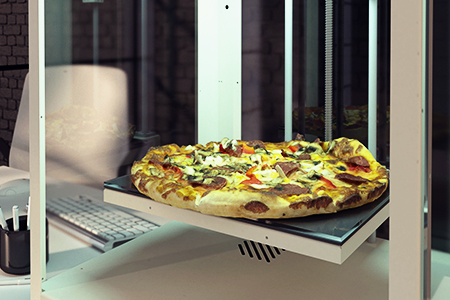Innovation
Taking Foodservice Innovation To The Next Level
Artificial Intelligence, or AI for short, is set to spearhead the next technological revolution in foodservice, with sweeping changes predicted over the next decade as its implementation costs drop to the point where industry uptake is expected to be widespread.

KEY INSIGHTS
- Sweeping changes are predicted for foodservice as the cost of implementing AI drops to the point where industry uptake is expected to be widespread
- Domino’s pizza chain in the US has been an early adopter of AI and since 2019 has been using it in its Australian operations to ensure the consistency of its pizzas
- Other innovations being trialled including self-driving delivery vehicles, and order taking via Chatbot
- AI’s ‘machine learning’ capability means it is capable of being ‘trained’ to AI monitor premises and check, for example, how often equipment and workplaces are being cleaned and sanitised
Artificial Intelligence, or AI for short, is set to spearhead the next technological revolution in foodservice, with sweeping changes predicted over the next decade as its implementation costs drop to the point where industry uptake is expected to be widespread.
You’ve probably already experienced AI in your interactions with businesses online, though you may not have realised it. Those little pop-ups in the corners of websites which are usually presented as virtual sales assistants asking if they can help you with your inquiry are actually examples of Chatbots – computer apps designed to mimic human conversation.
In the US, where the pizza market is dominated by big QSR chains, Domino’s was an early adopter of AI technology and since 2019 has also been using it in its Australia operations. The ‘DOM Pizza Checker’ uses a smart AI scanner which sits above the pizza cut bench and features advanced machine learning and its sensors to check the quality of every pizza. Since its Australian launch it has scanned more than 50 million pizzas.
Back in the US, Domino’s has also begun using AI to take orders and schedule staff.
The proponents of AI argue that it can be used to improve efficiency (by optimising processes through automation), effectiveness (by making processes seamless), expertise (by improving decision-making) and innovation (by facilitating creativity).
Here are some AI innovations predicted to impact the foodservice sector with particular emphasis on the pizza market:
· Self-driving vehicles for home delivery
In the US, Domino’s began a pilot program for self-driving pizza delivery vehicles back in 2019, partnering with autononmous vehicle startup Nuro to supply electric vehicles which delivered pizzas in a locked compartment. Customers were sent a PIN code which they used to open the door open arrival. With the trial having been successfully concluded, the plan is to begin rolling out this technology in coming years.
· AI order-taking
Order taking by Chatbot is the fastest and most efficient option for customers yet developed: it can be as simple as the customer telling the Chatbot “send me my regular order” – once it’s been saved to the system so the Chatbot knows what it is. Chatbots are designed to recognise customers so they don’t even need to give them their address or payment details when ordering – it’s all stored in the system.
AI order takers can be implemented across multiple platforms, which means that already in the US it’s possible for customers to order pizza through Google Home, Amazon Alexa, Twitter, Facebook Messenger, texting on the phone and even through their Smart TV!
There are more applications to come for AI in the foodservice space: it can be used at all steps of the process from preparation and cooking to packing, dispatch and delivery. AI innovators have already created a dispatch system that can automatically optimise delivery routes and assign orders to drivers who are best situated to delivery swiftly.
AI can also monitor foodservice premises and check, for example, how often equipment and workplaces are being cleaned and sanitised, whether customers and staff are social-distancing, and so on. All this is due to AI’s ‘machine learning’ capability: think of it as a technology which can be trained, so that it understands what is expected and can identify whether or not these expectations are being met.
YOU MAY ALSO LIKE



